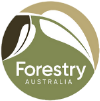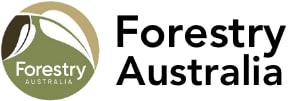
Case Study
Name: Michael Wright
Property: Nula Vale
In the year 2000 Michael bought a property and consulted with professionals to understand the land and its best uses. Initially he hoped to grow walnuts in conjunction with forestry plantings, however, they failed due to a lack of water. The infrastructure from the walnuts was later utilised to support a fruit orchard.
Michael then engaged a team of permaculture specialists which included surveyors who planned the water movement across the site for dam locations and planting locations. By 2002 Michael was ready to undertake the first plantings. The permaculture team also involved a tree planting expert who assisted with species selection and provenance of the seedlings.
The purpose for the forestry plantings was to supply specialist timbers for furniture manufacturing. Trees grown for this purpose are usually managed by high pruning to produce knot-free timber, and the plantation is thinned to promote growth. Michael’s objective was to produce a site that did not consist of a mere monoculture. This mixed plantings approach across the site was intended to promote biodiversity and enhance environmental habitat. The furniture timbers were initially inter-row planted with Blackwattle to provide protection for the seedlings. The Blackwattle has since progressively been removed after the timber species had overgrown them.
The forestry plantings across the site bring many commercial and environmental benefits. Commercially viable stands of furniture grade timbers are to be selectively harvested in the future. There will be no clear-felling of stands. Environmentally, the site has seen an enormous increase in birdlife and animals
The site now also benefits from significant cooling effects from the plantings. Small areas of erosion have been managed with environmental plantings to stabilise the soil, although there are not many of these areas. Michael believes the site was only cleared of vegetation for agriculture in the 1930’s and 1940’s.
Michael and his wife have registered with the Birdlife Australia program, Birds on Farms. Four plots are measured four times a year. Surprisingly high levels of returning species have been observed. Michael is also an active member of the local land care group that runs farmer enrichment and training courses in the local area. This group also undertake projects like physical pest species removal, such as Blackberry.
In recent years Michael has engaged with professional forester, Gary Featherston (Forest Strategy Pty Ltd) to help with the management of the forestry plantings on site, including thinning regimes, stand inventory and future planning. The forests are certified as sustainably managed via Gary’s group certification scheme.
| Location | 85kms north of Melbourne CBD |
|---|---|
| Annual rainfall Property size Enterprise type |
650-700mm 140 acres or 57 hectares Forestry |
| Property characteristics |
|
| Species planted on-site | Cupressus macrocarpa – Monterey cypress
Eucalyptus globulus– Tasmanian blue gum Eucalyptus nitens– Shinning gum Corymbia maculata– Spotted gum Acacia implexa– Lightwood Eucalyptus obliqua- Messmate Eucalyptus muelleriana- Yellow stringybark Casuarina cunninghamiana– River she-oak |

2000, East view

2007, East view

2012, East view

2016, East view

2023, East view

